Machine Learning Approach for
Systematic Global Macro Strategies
See important disclosures at the end of this presentation.
Ankit Awasthi
Quantitative Portfolio Manager
October 25, 2018
Outline of the talk
Global Tactical Asset Allocation
Why Asset Allocation
Macroeconomic Data
Why Deep Learning
Case Study

Global Strategic Asset Allocation
Based on Long Term Capital Market Assumptions
Incorporates Desired Risk and Return Profile
Asset allocation remains unchanged over time
Salient Features
Source: Qplum Research

Global Tactical Asset Allocation
Salient Features
Based on Long Term and Short Term Capital Market Assumptions
Incorporates Desired Return and Risk Profile
Dynamic Asset Allocation
Average Asset Allocation over long periods is similar to strategic allocation
Source: Qplum Research
Why Asset Allocation ?
More than 90% of the variance in returns
can be attributed to
Asset Allocation vs Security Selection
Source : CFA Institute Blog
Macro Data for Business Cycle Detection
Source : Federal Reserve Bank of St. Louis
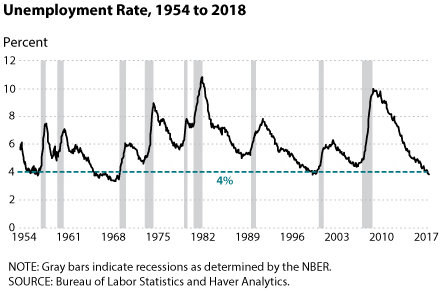
Troughs of Unemployment Rate turn out to be fairly robust predictors of recession.
Current unemployment rate is 3.7% which is the lowest since 1969.
Plot of Unemployment Rate OverTime
Macro Data for Business Cycle Detection
Source : Federal Reserve Bank of St. Louis
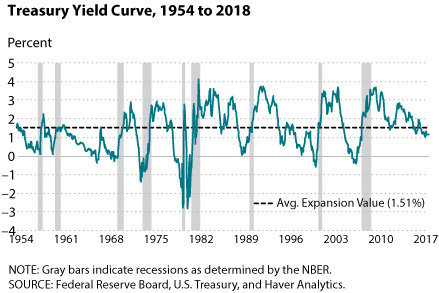
Yield Curve Inversion is another variable which has successfully predicted recessions.
Plot of difference of 10 year yields - 3 month yields over time
Why Deep Learning ?
Deep learning models excel at...
Capturing highly non-linear relationships
Combining disparate sources of information
Bayesian Deep Learning
Signal to Noise ratio is low in financial time series data
Point estimates of expected returns can have significant errors
Important to estimate model uncertainty along with expected returns
Dropout as a bayesian approximation
Source : Yarin Gal et. al. 2016
Case Study
The model or backtested portfolio and performance data provided in this presentation is theoretical and is not based on the performance of actual portfolios. It does not reflect trading in actual accounts; actual results may significantly differ from the theoretical returns being presented It is provided for informational purposes to illustrate use of deep learning only. Any interpretation of the results should take into consideration the limitations inherent in the results of the model. Backtested performance is developed with the benefit of hindsight, including the ability to adjust the method for selecting securities until returns for the past period are maximized, and has inherent limitations. Actual performance may differ significantly from backtested performance.
Macro-economic Indicators

Sample List of macro-economic indicators
Traded Securities

Sample list of ETFs used as proxies for different asset classes
ETFs chosen such that the...
Expense ratio is low
Cover important asset classes
AUM is high
Expected Returns Model
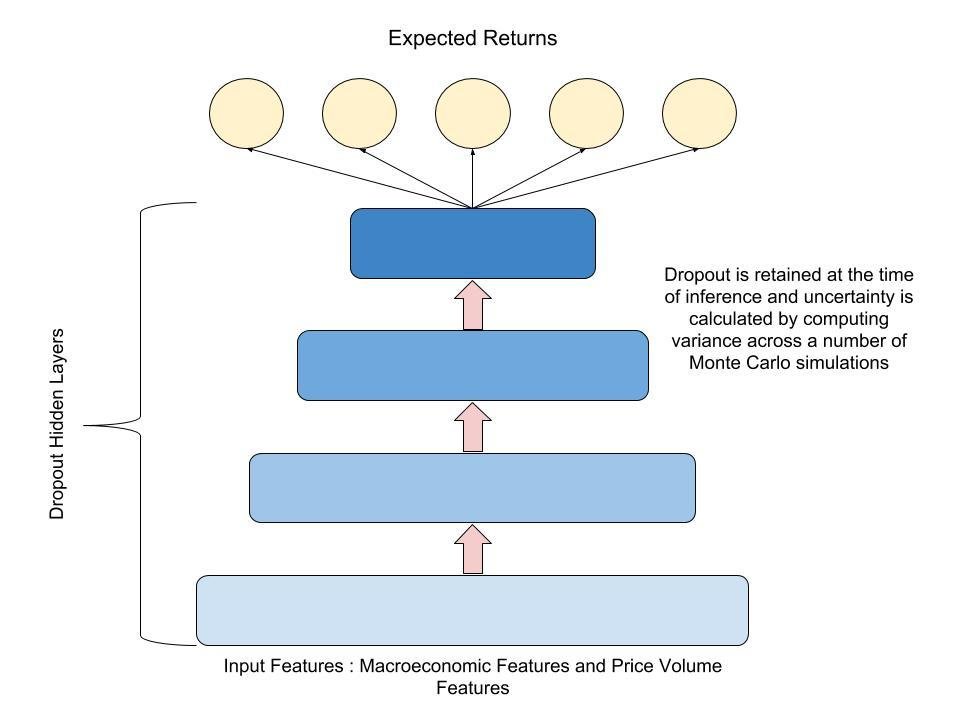
Architecture for the feed-forward neural network for computed expected returns and expected model uncertainty
Walk-forward Training and Testing
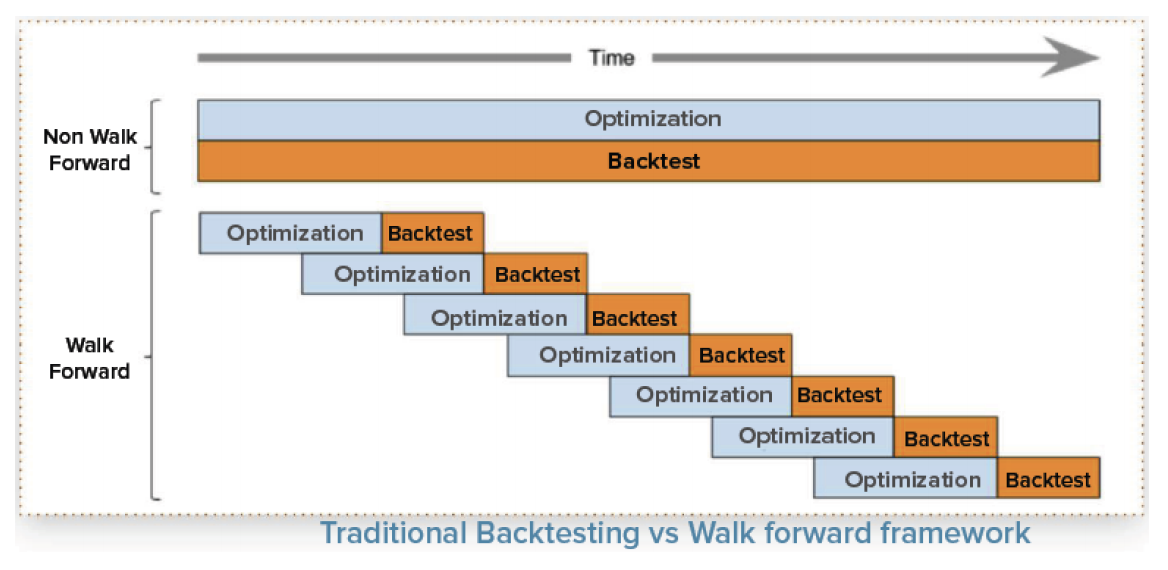
Walk-forward Optimization helps in....
Better performance in out of sample data
Higher conviction in backtested results
Expected Returns Model

Mean exponentially weighted MAE (mean absolute error) across all assets (scaled between 0 and 1)
Source: Qplum Research
Model Uncertainty vs Volatility
Correlation between uncertainties obtained from the model using dropout approximation and uncertainty obtained using volatility in different asset classes.
Asset Class |
Security |
Correlation b/w Dropout Uncertainty and Volatility Uncertainty |
|---|---|---|
US Fixed Income |
BND |
0.08 |
International Fixed Income |
BNDX |
-0.16 |
Emerging Markets Fixed Income |
VWOB |
-0.17 |
US Equities |
VTI |
0.36 |
EU Equities |
VGK |
0.30 |
Emerging Markets Equities |
VWO |
0.15 |
US Real Estate |
VNQ |
0.50 |
International Real Estate |
VNQI |
0.54 |
Utility Function based Position Sizing
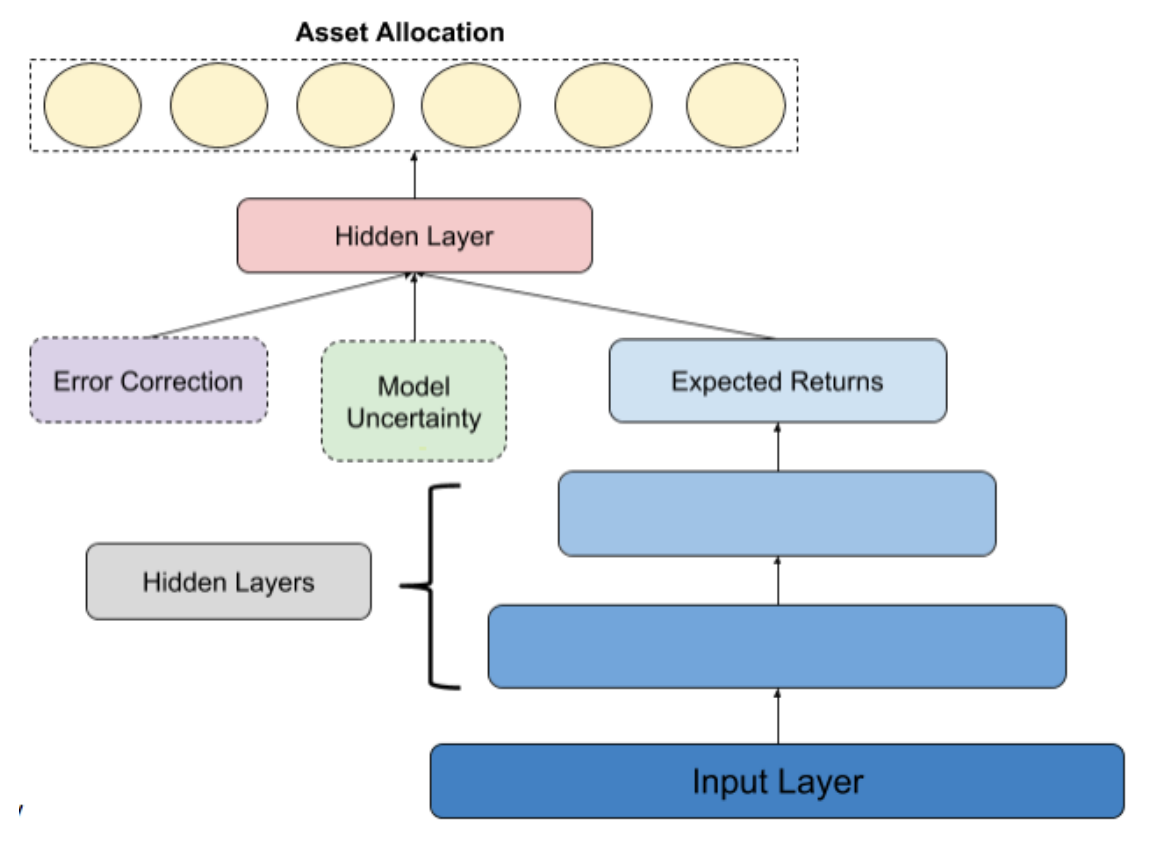
Architecture for position sizing based on the utility function. The basic idea is to learn the allocations directly based on the performance metric such as sharpe ratio. It uses the expected returns model, an error correcting feedback and the uncertainty of the expected returns model
Softmax
Utility Function
Sharpe Ratio ( net of all trading and slippage assumptions )
+
Entropy of allocations to different asset classes
Easy to extend to other objective functions capturing different investor preferences
CAGR |
Worst Drawdown |
Sharpe Ratio |
Sortino Ratio |
|
|---|---|---|---|---|
Run 1 |
8.4 |
23.8 |
0.95 |
1.30 |
Run 2 |
8.4 |
25.2 |
0.89 |
1.22 |
Run 3 |
8.8 |
27.0 |
0.99 |
1.35 |
Run 4 |
8.9 |
26.3 |
0.98 |
1.36 |
Run 5 |
7.2 |
29.9 |
0.79 |
1.07 |
Risk Parity |
8.9 |
27.8 |
0.87 |
1.20 |
Backtested cumulative returns of the strategy across different runs against risk parity in the observation period. The variation in performance comes from different initializations of the neural network
Performance statistics for different runs and risk parity
Cumulative Performance
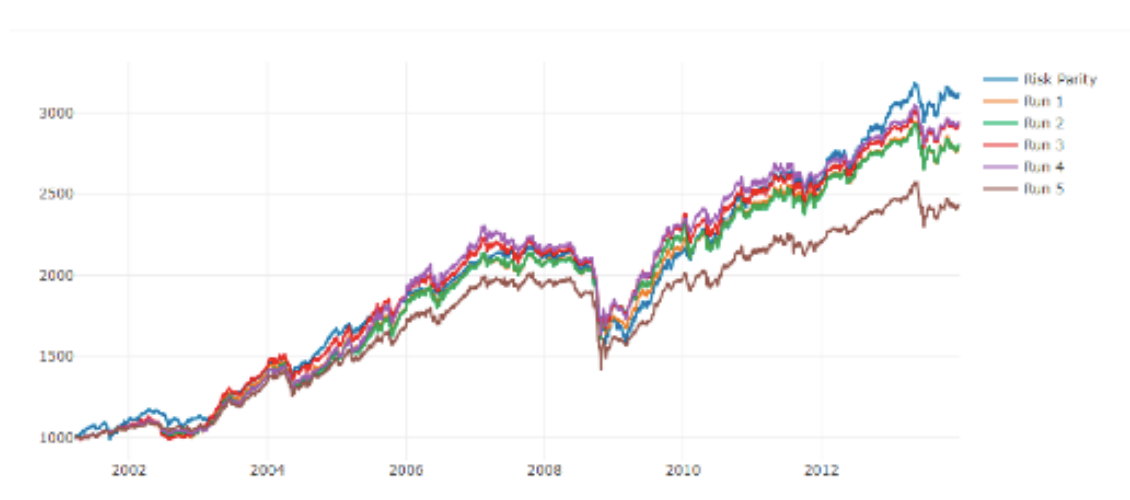
Uncertainty estimate based on realized volatility
Source: Qplum Research
Asset Allocation
Asset allocation over time for utility based position sizing logic over time
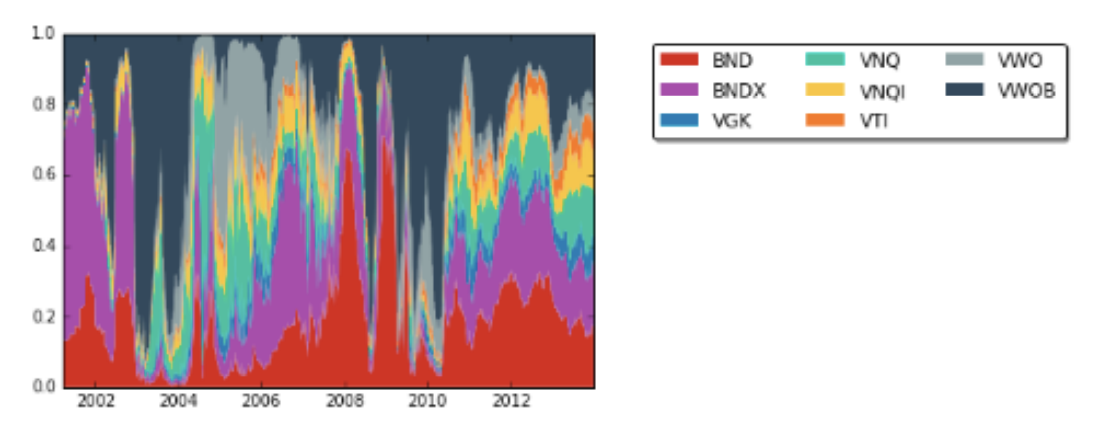
Uncertainty estimate based on realized volatility
Source: Qplum Research
CAGR |
Worst Drawdown |
Sharpe Ratio |
Sortino Ratio |
|
|---|---|---|---|---|
Run 1 |
9.3 |
30.7 |
0.74 |
1.03 |
Run 2 |
10.6 |
29.9 |
0.87 |
1.23 |
Run 3 |
10.3 |
28.9 |
0.84 |
1.19 |
Run 4 |
9.9 |
26.3 |
0.84 |
1.18 |
Run 5 |
10.5 |
32.0 |
0.87 |
1.22 |
Risk Parity |
8.9 |
27.8 |
0.87 |
1.20 |
Backtested cumulative returns of the strategy across different runs against risk parity in the observation period. The variation in performance comes from different initializations of the neural network
Performance statistics for different runs and risk parity
Cumulative Performance
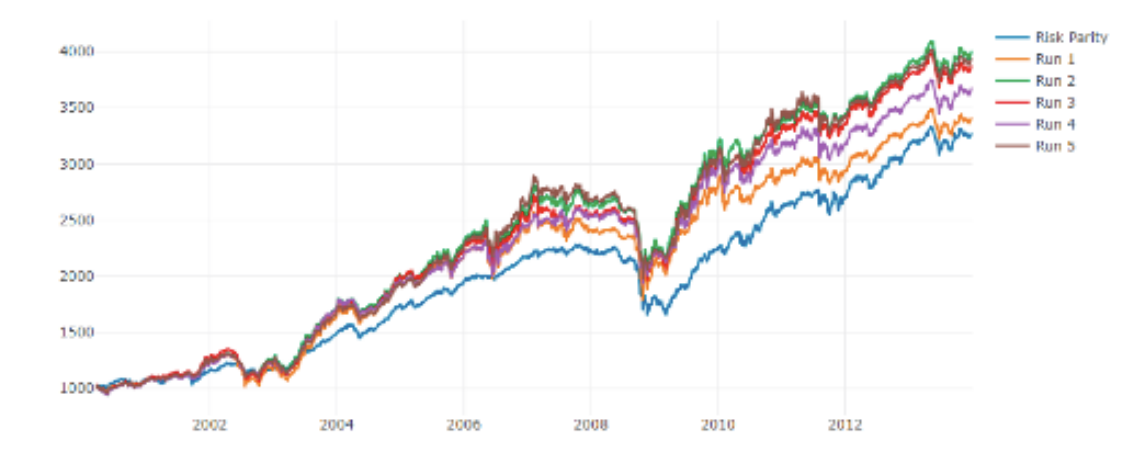
Uncertainty estimate based on model uncertainty
Source: Qplum Research
Asset Allocation
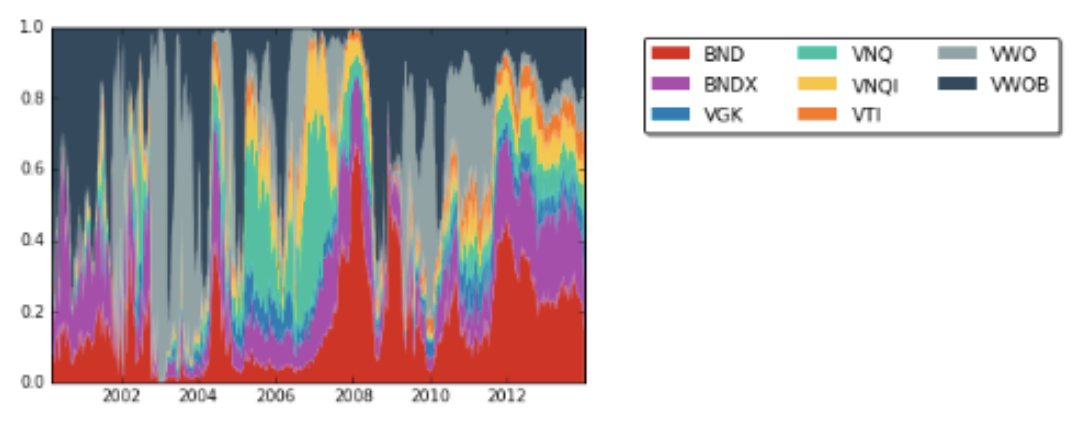
Asset allocation over time for utility based position sizing logic over time
Uncertainty estimate based on model uncertainty
Source: Qplum Research
Strategy |
CAGR |
Worst Drawdown |
Sharpe Ratio |
Sortino Ratio |
|---|---|---|---|---|
Utility Function (MC) |
4.3 |
17.2 |
0.44 |
0.58 |
Utility Function (Vol) |
5.2 |
12.9 |
0.62 |
0.82 |
Expected Returns |
2.0 |
8.3 |
0.37 |
0.50 |
Risk Parity |
4.6 |
9.3 |
0.76 |
1.03 |
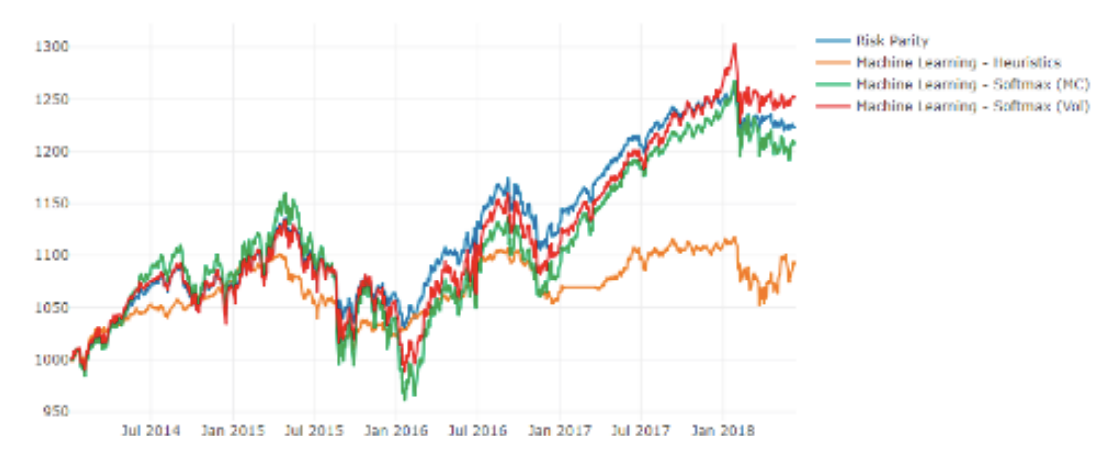
Performance of different formulations against risk parity in out of sample period
Performance stats of different formulations against risk parity in out of sample period
Cumulative Performance
Source: Qplum Research
Future Improvements
Increase the coverage of macro-economic variables
Better estimates of model uncertainty
Use hypothetical data to learn price-volume features
Explore other neural network architectures
Key Takeaways
Systematic walk-forward training of deep neural networks for financial time series data
Bayesian deep learning could be helpful in applications where signal to noise ratio is low such as capital markets
Utility function as an objective function for training to directly determine allocation
Deep neural networks are a flexible and powerful framework to do tactical asset allocation
Questions?
contact@qplum.co
ankit@qplum.co
Important Disclaimers: This presentation is the proprietary information of qplum Inc (“qplum”) and may not be disclosed or distributed to any other person without the prior consent of qplum. This information is presented for educational purposes only and does not constitute and offer to sell or a solicitation of an offer to buy any securities. The information does not constitute investment advice and does not constitute an investment management agreement or offering circular.
Certain information has been provided by third-party sources, and, although believed to be reliable, has not been independently verified and its accuracy or completeness cannot be guaranteed. The information is furnished as of the date shown. No representation is made with respect to its completeness or timeliness. The information is not intended to be, nor shall it be construed as, investment advice or a recommendation of any kind. Past performance is not a guarantee of future results. Important information relating to qplum and its registration with the Securities and Exchange Commission (SEC), and the National Futures Association (NFA) is available here and here.